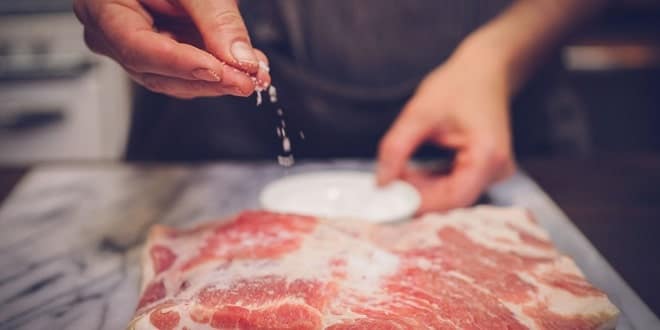Curing & Smoking of Meat
Curing & Smoking of Meat
ANSC 3404
Background & History
Many methods of preserving meat have been used throughout history. Sumerians first to salt meat over 5,000 years ago. Ancient Hebrews used salt from Dead Sea to preserve meat 4000 years ago Possible that smoking of meats was “accidentally discovered” by Native Americans. Hung meat from tops of teepees In 1970’s 80’s ingredients used in curing and smoking were heavily researched Possible health implications (cancer, etc.)
What is Curing?
Curing is addition of salt, sugar, and nitrite or nitrate to meats for purpose of preservation, flavor enhancement, or color development.
Today curing is performed more for flavor development than for preservation
Other functions of curing
Shelf life extension
Development of unique properties
Resistance to rapid deterioration
Controlling microbial growth.
Curing Ingredients
Salt (NaCl)
Contributes flavor
Preservative effect
Controls microbial growth (doesn’t kill bacteria)
Osmosis (enhances transport of nitrate, nitrite, and sugar)
Can be in granular or rock forms.
Only difference is quantity of NaCl in the salt.
Sugar (C12H22O11)
Contributes flavor
Counteracts salt
Provides source of energy for nitrate converting bacteria
Lowers the acidity of the cure
Can be added in the form of:
Sucrose (table sugar/brown sugar)
Dextrose (refined corn sugar)
Corn syrup solids
RRM uses powdered sugar
Finer particle size→ easier to dissolve in water
Commercial cures use corn syrup solids
Cheaper
May require more to get same flavor
Curing Ingredients
Nitrite (NaNO2) or Nitrate (NaNO3)
Contributes flavor
Prevents warmed-over flavor (WOF) in reheated products
Retards development of rancidity during storage
Prevents growth of C. boltulinum in canned products
Bacteriostatic
Contributes cured-pink color to the product.
Nitrites & Nitrates
Usually come in the form of potassium or sodium nitrites or nitrates.
FSIS allows use of nitrate (NaNO3 or KNO3) ONLY in dry cured meats or dry sausage.
FSIS permits use of Nitrites (NaNO2 or KNO2) in bacon
Ingoing nitrite level cannot exceed 120 ppm
Must be accompanied by 550ppm sodium ascorbate or sodium
erythorbate
Residual nitrite must not exceed 40 ppm
Nitrites and Nitrates can be carcinogenic.
MIT Study: 40 pounds of bacon/day for 40 years
Currently seeing increase of “No Nitrite” or “Uncured” products
…

